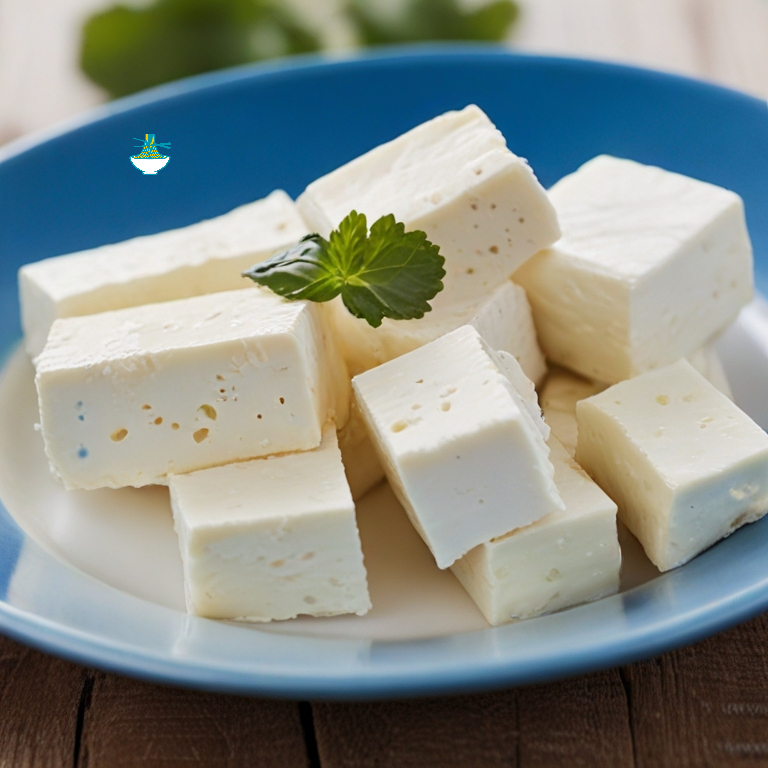Indulge in the rich history and exquisite flavor of Greece's beloved culinary treasure with our authentic Feta cheese. Crafted from the finest quality sheep's milk, our Feta embodies centuries of tradition and expertise, resulting in a creamy texture and tangy taste that captivates the senses. Whether crumbled atop fresh salads, melted into savory pastries, or enjoyed simply with olives and crusty bread, each bite transports you to the sun-drenched hillsides of Greece. Elevate your culinary experience with the unparalleled excellence of Greek Feta cheese.
Ingredients:
- 2 gallons of fresh sheep's milk (can also use a combination of sheep's and goat's milk)
- 1/4 teaspoon Mesophilic starter culture (available at specialty stores or online)
- 1/4 teaspoon liquid calcium chloride (if using pasteurized milk)
- 1/4 teaspoon liquid rennet diluted in 1/4 cup of non-chlorinated water
- 1/4 cup cheese salt
- Cheese brine (made by dissolving 2 cups of non-iodized salt in 1 gallon of non-chlorinated water)
Equipment:
- Large stainless steel pot
- Thermometer
- Cheesecloth
- Colander
- Cheese mold
- Cheese press
- Cheese aging container or brining container

Instructions:
1- Heat the milk: Pour the sheep's milk into a large stainless steel pot and heat it slowly over low to medium heat, stirring gently to prevent scorching. Heat the milk to around 86°F (30°C).
2- Add the culture: Once the milk reaches the desired temperature, sprinkle the Mesophilic starter culture evenly over the surface of the milk. Let it hydrate for a minute, then gently stir it into the milk using an up-and-down motion.
3- Coagulate the milk: Add the diluted rennet to the milk and stir gently for about 30 seconds. Cover the pot and let it sit undisturbed for 45-60 minutes, or until the milk forms a clean break.
4- Cut the curds: Once the curd has formed, use a long knife to cut it into small cubes, about the size of peas. Make vertical cuts through the curd mass, then horizontal cuts to create a grid pattern.
5- Cook the curds: Place the pot back on the stove over low heat and slowly heat the curds to 100°F (38°C), stirring gently to prevent matting. Maintain this temperature for about 30 minutes, continuing to stir occasionally.
6- Drain the curds: Line a colander with cheesecloth and carefully ladle the curds into it, allowing the whey to drain away. Let the curds drain for about 15 minutes, then gather the corners of the cheesecloth and tie them together to form a bag.
7- Press the cheese: Place the cheese bag in a cheese mold and press it at about 20 pounds of pressure for 4-6 hours. Flip the cheese halfway through the pressing time.
8- Salt the cheese: Remove the cheese from the mold and unwrap it. Sprinkle cheese salt evenly over the surface of the cheese, rubbing it in gently. Let the cheese air dry at room temperature for about 1-2 days, flipping it occasionally.
9- Age or brine the cheese: Once the cheese has air-dried, it can either be aged in a cheese aging container in the refrigerator for a few weeks, or it can be transferred to a brining container filled with cheese brine and aged in the refrigerator for 1-2 days.
10- Enjoy: Your homemade Greek Feta cheese is now ready to be enjoyed! Crumble it over salads, use it in various dishes, or savor it on its own with some crusty bread and olives. Store any leftovers in brine in the refrigerator for up to several weeks.
Nutritional Values:
Here are approximate nutritional values for the main ingredients used in making Greek Feta cheese per 100 grams:
Sheep's Milk:
- Calories: 108 kcal
- Protein: 5.98 g
- Fat: 7.08 g
- Carbohydrates: 4.67 g
- Calcium: 170 mg
benefits:
- Rich in protein, essential for muscle repair and growth.
- Contains calcium, vital for bone health and nerve function.
- High in healthy fats, which provide energy and aid in the absorption of fat-soluble vitamins.
Mesophilic Starter Culture:
- Nutritional values negligible (used in very small quantities)
benefits:Essential for initiating the fermentation process, leading to the formation of desirable flavors and textures in cheese.
Liquid Calcium Chloride:
- Nutritional values negligible (used in very small quantities)
benefits:Helps improve the curd formation and yield when using pasteurized milk by restoring calcium balance.
Liquid Rennet:
- Nutritional values negligible (used in very small quantities)
benefits:Essential for coagulating the milk and forming a solid curd, crucial in cheese-making.
Cheese Salt:
- Nutritional values negligible (used in very small quantities)
benefits:Adds flavor to the cheese and helps in preserving it by drawing out moisture and inhibiting the growth of harmful bacteria.
Non-iodized Salt (for brine):
- Sodium content varies based on the concentration of the brine solution. Typically, brine is made with a concentration of about 20-25%. So, if 2 cups (approx. 380 grams) of salt are used to make the brine, and it yields 1 gallon of brine (approx. 3.8 liters), then the sodium content would be around 100-125 mg per 100 grams of brine.
Please note that the nutritional values for the final product, Feta cheese, will be different as some nutrients will be lost during the fermentation, pressing, and aging processes, and the concentration of nutrients may vary depending on the moisture content of the cheese. Additionally, the nutritional values provided here are approximate and can vary based on factors like the specific brand of ingredients used and the methods of production.


Comments